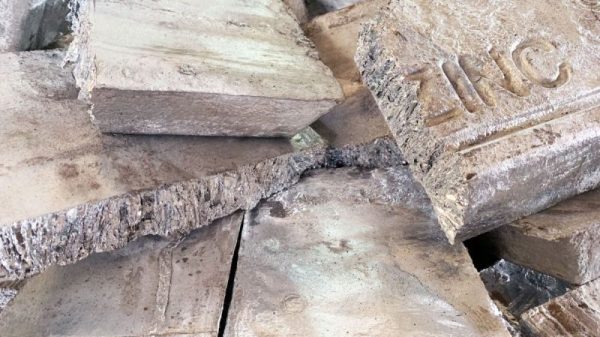Hundreds of pagers carried by Hezbollah members in Lebanon blew up nearly simultaneously on Tuesday in an unprecedented attack that surpasses a series of covert assassinations and cyber-attacks in the region over recent years in its scope and execution.
The Iran-backed militant group said the wireless devices began to explode around 3:30 p.m. local time in a targeted Israeli attack on Hezbollah operatives.
Israel’s military, which has engaged in tit-for-tat strikes with Hezbollah since the start of the war with Iran-backed Palestinian militant group Hamas in Gaza last year, has refused to comment publicly on the explosions.
Experts say the explosions, unprecedented in their scale and nature, underscore Hezbollah’s vulnerability as its communication network was compromised to deadly effect.
Who was affected?
Several areas of the country were affected, particularly Beirut’s southern suburbs, a populous area that is a Hezbollah stronghold.
Footage showed shoppers and pedestrians collapsing in the street following the blasts. The blood-soaked injured bore flesh wounds, clips showed, including lost fingers, damaged eyes, and abdominal lacerations.
At least nine people were killed, including a child, and about 2,800 people were wounded, overwhelming Lebanese hospitals.
Why was Hezbollah using pagers?
Hezbollah has long touted secrecy as a cornerstone of its military strategy, forgoing high-tech devices to avoid infiltration from Israeli and US spyware.
Unlike other non-state actors in the Middle East, Hezbollah units are believed to communicate through an internal communications network. This is considered one of the key building blocks of the powerful group that has long been accused of operating as a state-within-a-state.
At the start of the year, Hezbollah leader Hassan Nasrallah called on members and their families in southern Lebanon, where fighting with Israeli forces across the border has raged, to dump their cellphones, believing Israel could track the movement of the Iran-backed terror network through those devices.
“Shut it off, bury it, put it in an iron chest and lock it up,” he said in February. “The collaborator (with the Israelis) is the cell phone in your hands, and those of your wife and your children. This cell phone is the collaborator and the killer.”
Hezbollah instead went low-tech by turning to pagers, according to Avi Melamed, a former Israeli intelligence official and Middle East analyst.
The pagers would have prompted Hezbollah members to contact one another through those phone lines. But even that option was not without risk.
“Hezbollah regressed back to these devices thinking [they] would be safer for its combatants to use instead of phones which could be GPS targeted,” Melamed said. “These very low-tech devices were used against them and very possibly deepening the stress and embarrassment on its leaders.”
How did the pagers explode?
As Lebanon reels from the attack, speculation has mounted on how low-tech wireless communication devices could have been exploited.
The New York Times reported Tuesday that Israel hid explosives inside a batch of pagers ordered from Taiwanese manufacturer Gold Apollo and destined for Hezbollah. A switch was embedded to detonate them remotely, it added.
Most of the pagers were the company’s AP924 model but three other Gold Apollo models were included in the shipment, the Times reported.
Multiple photos that appear to show damaged Gold Apollo pagers have emerged on social media, alongside claims they were damaged in the wave of explosions.
Human operatives inside Hezbollah would have been key to the operation, he added.
“This is one of the most widescale and coordinated attacks that I’ve personally ever seen. The complexity needed to pull this off is incredible,” he said.
“It would have required many different intelligence components and execution. Human intelligence (HUMINT) would be the main method used to pull this off, along with intercepting the supply chain in order to make modifications to the pagers.”
What is the purpose of the attacks?
The operation was also likely designed to create a high-level of paranoia among Hezbollah members, degrade their ability to recruit people, and erode confidence in the leadership of Hezbollah and their ability to secure their operations and people.
Amos Yadlin, a former head of Israeli military intelligence and one of the country’s leading strategic experts, said the Israeli attack displayed “very impressive penetration capabilities, technology and intelligence.”
He speculated on X that Israel could have been sending a warning to Nasrallah.
“It seems the goal was to pass a message that sharpens the dilemma of Nasrallah: how much is he willing to pay for continuing to attack Israel and backing [Hamas leader Yahya] Sinwar?” Yadlin wrote. “The organization, which prides itself on secrecy and a high level of security, found itself penetrated and exposed.”
Or it could be a “prelude to an Israeli large-scale campaign against [Lebanon], at a time when Hezbollah is facing the chaos of this latest very science-fiction-like attack against its operatives.”
Why would Israel want to target Hezbollah?
Israel, which has yet to publicly comment on the deadly incident, leads the list of actors with the intent to degrade Hezbollah, experts say.
Israel has been linked to, or accused of, previous remote attacks in the region. Experts believe Israel and the United States were responsible for deploying a complex computer virus called stuxnet that destroyed centrifuges at an Iranian nuclear facility in 2009 and 2010.
Tuesday’s attack raises tensions in the already inflamed region. Hostilities are at an all-time high between Israel and Hezbollah following Hamas’ October 7 attack on Israel. Hezbollah, which has a formidable arsenal of weapons, has said its attacks on Israel are in solidarity with Hamas and Palestinians in Gaza.
Global leaders have been scrambling to prevent an escalation. US Secretary of Defense Lloyd Austin spoke twice with his Israeli counterpart, Israeli Defense Minister Yoav Gallant, according to two US defense officials.
The official would not specify when the calls took place. Though the two are in regular contact, it’s uncommon to schedule two calls in one day and shows how seriously the US views the current situation.

























